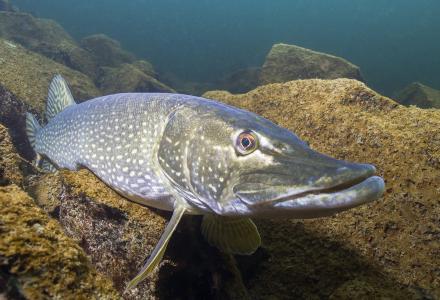Efforts to “Untrouble the Waters” of our Great Lakes have been years in the making.
In 2015, the University of Illinois Freshwater Lab hosted a Water after Borders Summit that brought binational Great Lakes leaders together with Middle East representatives from the Jordan River Valley.
Participants found encouragement in presentations from IJC US Chair Lana Pollack and directors of the US Environmental Protection Agency (EPA) and Environment Canada. They marveled at how water sharing engaged different factions in the long-standing Middle East conflict. Shared water, it seems, truly transcends boundaries.
This got us thinking about the boundaries in so many Great Lakes cities between races and socio-economic classes, and the degree to which the benefits and risks of water are distributed accordingly. To address this, we focused on Great Lakes mayors of color and convened an environmental justice planning committee. We called the event Untrouble the Waters, and held it May 10-11 at the University of Illinois at Chicago.

What does it mean to Untrouble the Waters?
Goals for the summit included:
- Highlight water leadership, particularly by women and people of color
- Create and support a network to address pressing water issues across cities of the Great Lakes basin
- Explore equitable water sharing as a means of racial reconciliation and economic development
- Conceive projects to enhance water quality, human health, and everyday life
- Build partnerships among government, academia, and communities.
To accomplish these, mayors, local leaders and researchers were invited to envision and launch projects that benefit communities and watersheds. Keynote speaker Maude Barlow, national chairperson of the Council of Canadians, stressed the importance of reflecting on the global freshwater crises, ranging from disappearing rivers in China to the polluted waters of India and Russia, extreme droughts in Brazil and East Africa, and parched and sinking conditions in Mexico City. This global crisis, Barlow argued, creates a global community that must fight for water justice. The Great Lakes region can benefit from other communities like Zurich and Paris by following their lead to create blue communities. This includes a pledge to protect water as a human right, fight water privatization, and promote tap water over bottled water.
A session on environmental justice and a Great Lakes Mayors Panel highlighted key issues such as aging infrastructure, algal blooms, lead poisoning and water shutoffs, and set the stage for working group discussions the next day. The groups generated several findings and possible projects and efforts to address these and other issues facing Great Lakes communities.

What Did We Learn?
Summit participants came to several conclusions. First, we should start by calling the Great Lakes region what it is – the Water Belt. Then we need to identify the corroded pipes and toxic trails to identify communities most affected by these issues. The problem of violations of water quality regulations and infrastructure obsolescence are widespread in the Great Lakes region. University of Missouri political scientist David Konisky found that state agencies were less likely to enforce Clean Water Act and Resources Conservation and Recovery Act (RCRA) regulations in counties with higher non-white and low income populations. Michigan State University academics Rachel Butts and Stephen Gasteyer found that counties in Michigan with a higher percent of low-income and non-white residents had higher average water rates.
Second, public utilities must maintain high-quality service amidst rapidly diminishing government revenue and competing desires to privatize water resources and associated infrastructure. The failure of the Flint water system, for example, can be explained through this frame because of the state of Michigan’s direction to switch water sources, which resulted in corrosive water that leached lead from old pipes. This requires not only safeguarding the public operation of water infrastructure, but building blue economies in which locals prosper from reasonable use of their resources. As a step in this direction, the Water Delivery & Lead Pipes working group discussed how municipalities like Flint, Milwaukee and Chicago might replace existing systems while innovating water delivery technology.
The question of how to engage municipal governments likewise concerned the Water Cost and the Human Right to Water group. The group agreed on a project to provide decision makers with context as they determine whether to privatize water systems.
Participants also identified culture as vital to engaging people in water issues, as well as reflecting their experiences and values. Ideas and projects from the summit will be reflected in a Freshwater Stories digital storytelling site, now in development and awaiting expansion through the Freshwater Lab’s collaborative content tour to communities around Lake Michigan during summer 2017.

Water connects and divides communities
Because water constitutes such a necessary public good, participants agreed that we need a new approach that engages everyone in the question of how water is managed. Several summit participants have contributed to a Water Affordability Plan for Detroit, Michigan, to ensure that every household can afford a stable water supply. A bioregional or basinwide orientation was further discussed as a means through which the public might have more of a say over inputs and contaminants. In an era of climatic and political uncertainties, we are still connected by water. The Freshwater Lab now turns to implementing these ideas in its own work and with summit participants and their communities. For more information about the Freshwater Lab and its 2017 summit, contact Lab Director Rachel Havrelock at raheleh@uic.edu.




